

The Oil Painting Process ~ Canvas Preparation
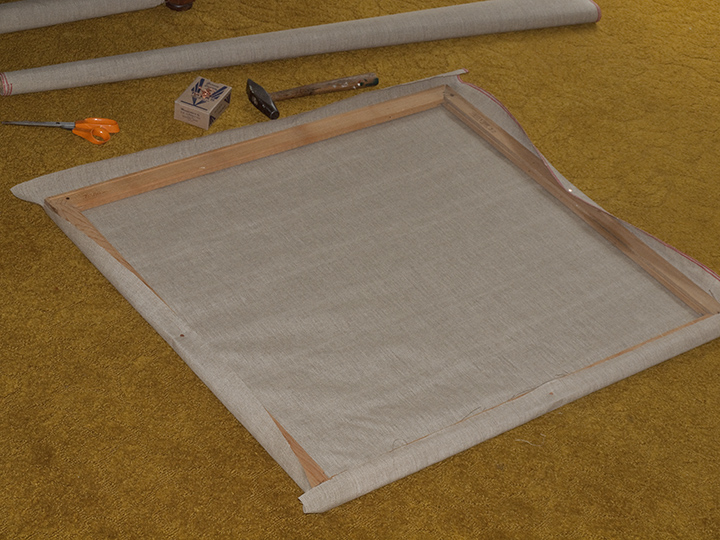
Canvas Preparation ~ Oil on Canvas ~ Tools needed; linen canvas roll, scissors, stretcher bars, hammer, rabbit skin glue, & copper plated canvas tacks. Prepare
stretcher frame by sliding corners together and nailing or tacking to secure positioning. Check for squareness. Cut canvas to fit frame with 2 or 3 inches excess canvas for
resizing or restoration. Soak rabbit skin glue overnight in double boiler, use granules, not powdered form. The best recipe I've found is 1 1/2 oz glue to 1 quart water.
This recipe and many other excellent techniques for painting permanence are in Ralph Mayer's The Artist's Handbook of Materials and Techniques. I have the Fourth
Edition published by Viking Press, New York. The book was originally published in 1940.
Begin tacking your canvas in the middle of the stretcher bars, starting with the longest dimension. You can tack on the outside edge of the frame or leave a little more
canvas and do a gallery wrap. Continue rotating canvas to keep your tension even and try to keep your linen fibers as aligned as possible to the edges of the frame. DO NOT
stretch too tight during this stage of the process, your rabbit skin glue will tighten the canvas quite a bit when applied and loosen slightly when dried. You just want to line up your
yarns and mount the canvas on the frame where you want it. You don't want to leave it so loose that it shapes itself either. The best advice is not to try and stretch the canvas at
this stage. Continue rotating between frames and diagonals until complete.
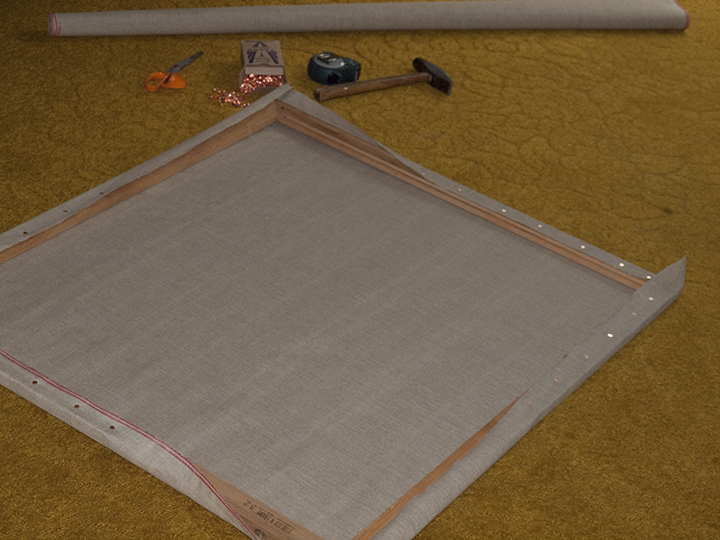
Notice in the photo above ~ you alternate tacking so you are always stretching opposite edges of opposite sides of the frame (from the center out). Continue occasionally checking
for squareness. Your corners are folded over and tacked as flat as possible. A gallery wrap is shown in the photo below.
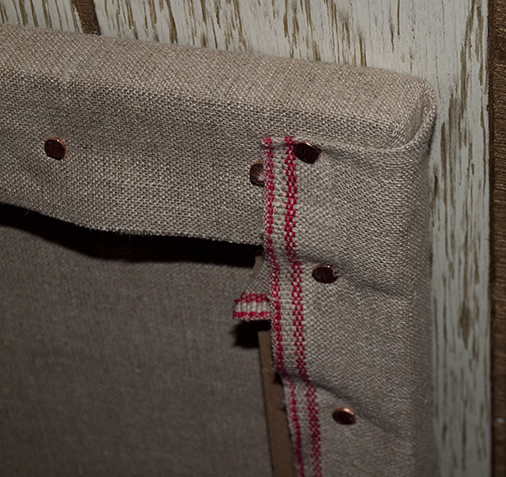
Applying Sizing ~Glue size is necessary for one purpose only: to protect the linen fibers from the deteriorating effect of the natural acids contained in linseed and other drying
vegetable oils. Warm glue in a double boiler until dissolved, DO NOT BOIL, and brush on while still hot. Try to cover quickly and evenly with wide brush. You'll notice your linen
becoming taut right away. On large canvases I have had stretcher bars crack and have had to restretch the canvas. If this happens, wash out glue from the linen, let dry and start
the process over again. Notice in the photo below on this larger canvas the glue has distorted the frame. As long as the frame doesn't crack there is no need to be concerned.
The fibers will relax when dry and the canvas can then be adjusted to square up. For squaring your finished canvas you can find a straight door jam and push hard to square
whichever stretcher bar edge is out of line. Dry your linen thoroughly, 2 or 3 days may be needed.
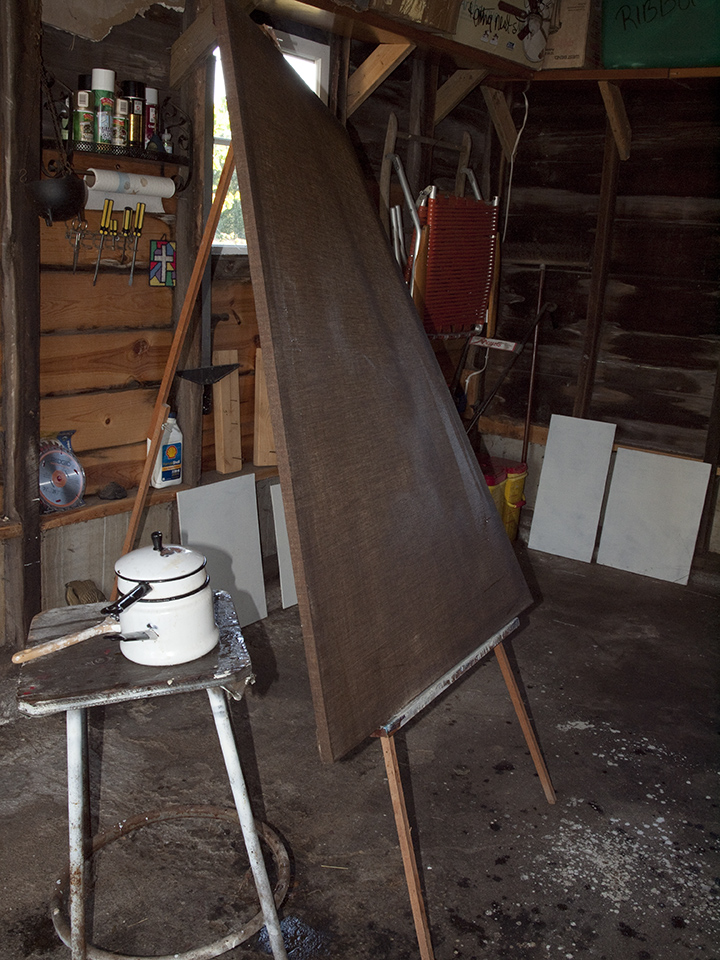
Applying Primer ~ Tools needed; prepared, sized canvas, White Lead in Oil, Pure Gum Turpentine, larger brush and container you can dispose of after use. You will apply two coats
minimum and possibly three striving to achieve good coverage. Mixing your primer to the right consistency can be tricky. The recommended recipe is: 1 pound of White Lead in Oil
thinned with three fluid ounces of turpentine. I have used 3 to 4 times the amount of turpentine, depending upon humidity and temperature. You want good flow and creamy
consistency. Plan on stirring your lead in oil for 20 - 30 minutes to get the oil mixed thoroughly. Lead in Oil is very heavy.
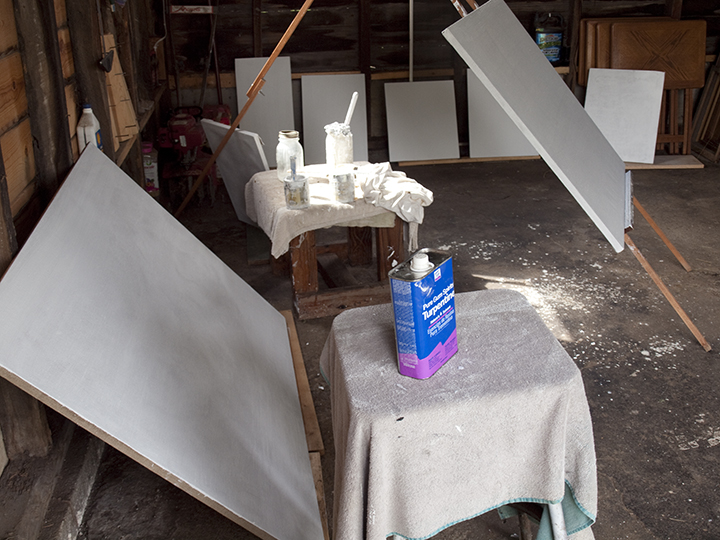
Apply very quickly. Keep the objective of having the smoothest surface possible in mind. Try to keep your canvas almost flat while using uniform brush-stroking, a light back-and-
orth wrist motion followed by a final light smoothing stroke with the empty brush held flatly and drawn continuously from one edge to the opposite edge without a stop, if possible.
If the consistency is too thin the primer will extrude through the linen. When a little priming does come through, as in the photo below, especially in small dots, it is an indication that
the coating has good, permanent anchorage; home-made canvases often show them.
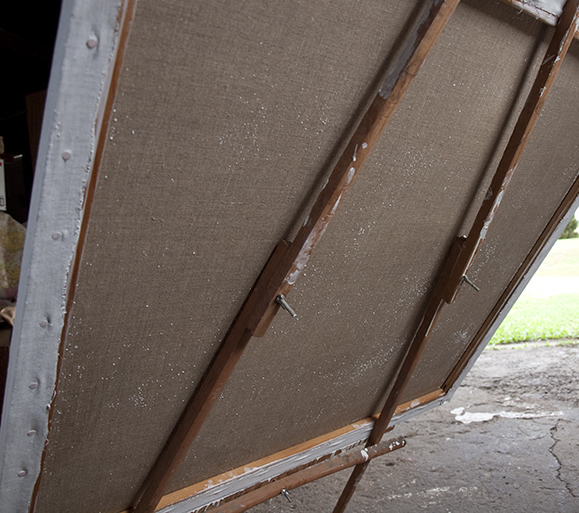
The primed canvas should be used right away after drying, which may take 3 or more days.
If not being used right away, it should be aged approximately 6 months.
Whatever you do, do all to the glory of God
In